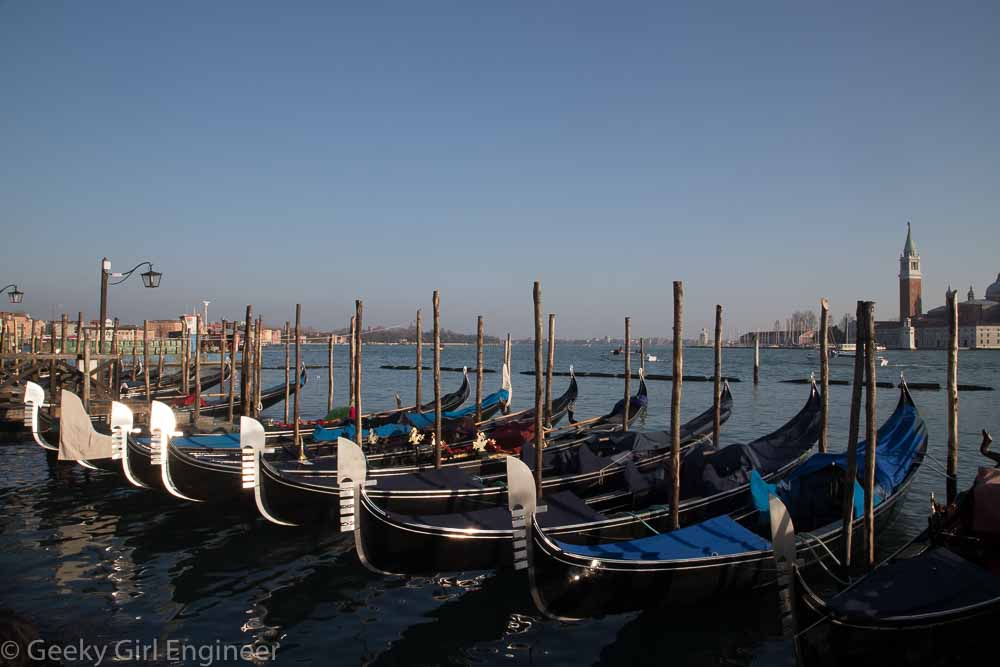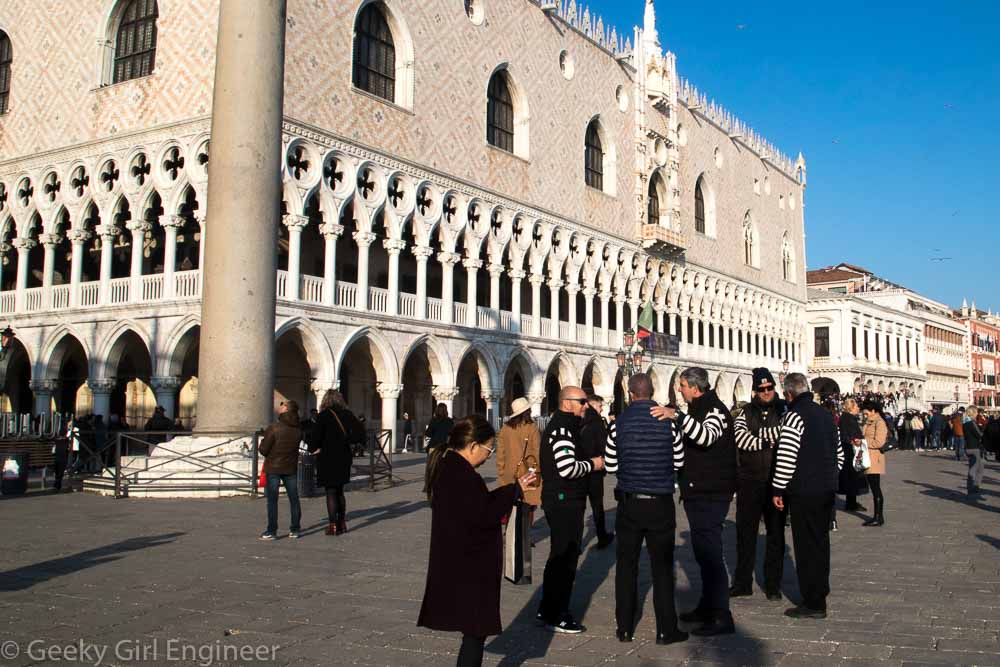Today in Venice was Gondola Day. We started the day by going to a place where they make gondolas, restore old ones, and do maintenance on them. Then we went to a shop where they make certain pieces for the gondolas. We followed it up with a gondola ride through some canal with musicians.
First, we went to Squero Tramontin (Domenico Tramontin e Figli) where they make new gondolas, restore old ones, and do maintenance on currently used ones. The company is currently owned by two sisters, who inherited it from their father. It has been a family business for five generations, since 1884. Elena Tramontin explained to us how they make a gondola and the history of them. Originally gondolas were used for everything in Venice including police, ambulance, etc. They were also originally operated by two gondoliers, but the shape was changed so that one gondolier can operate it. All gondolas are completely flat bottom, and in fact all boats that operate in Venice’s lagoon are flat bottom. The gondolas only need 10 cm of water depth. They are made of mahogany, cherry, and oak. The wood is dried naturally and needs about a year too dry. The wood is bent with water and fire. They are coated with six coats of paint, and finished with 24 carat gold leaf accents. It takes about five to six months to complete one. The government decreed that all gondolas be black centuries ago. The edging was brass, but now steel is used. The counterweight at the front is iron and has symbolic meaning (see photo below). The gondolas are built to last 30 years, but they need maintenance every 50 days or so to remove barnacles and such. However, in the shop when we visited were much older gondolas.

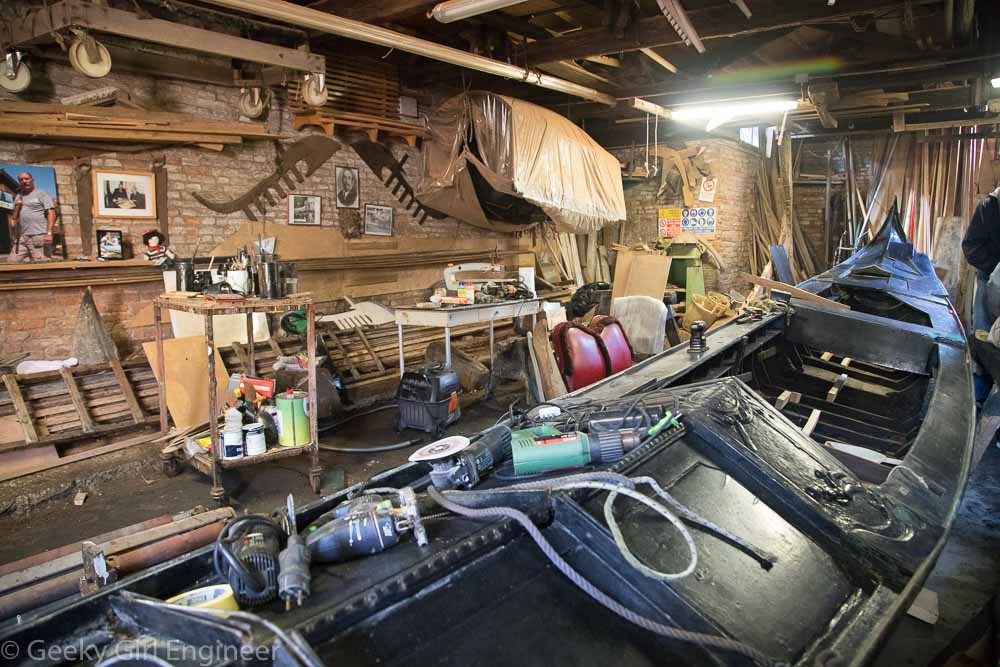
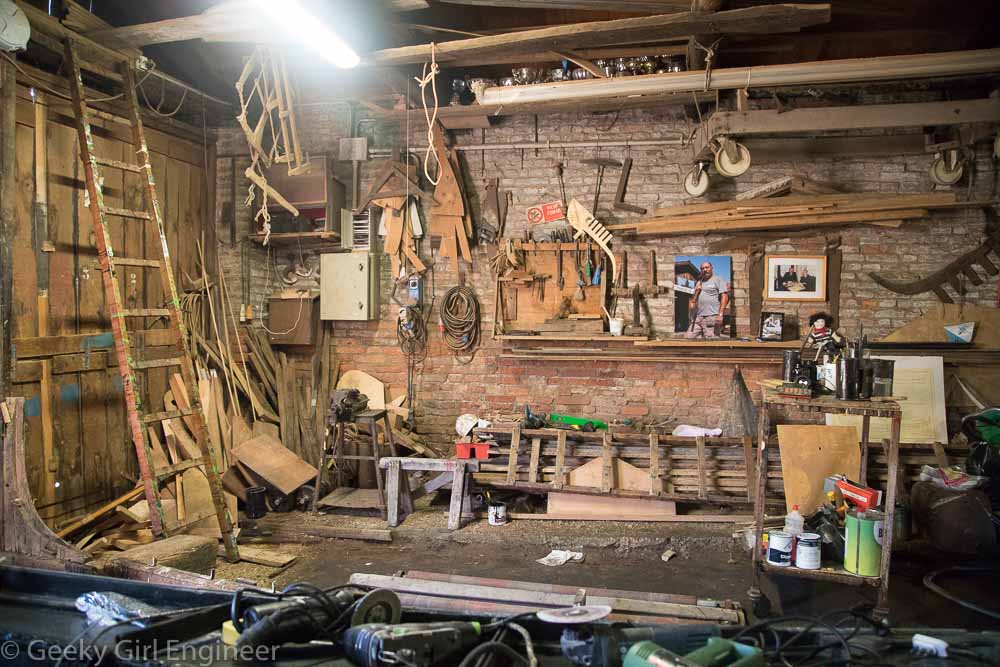
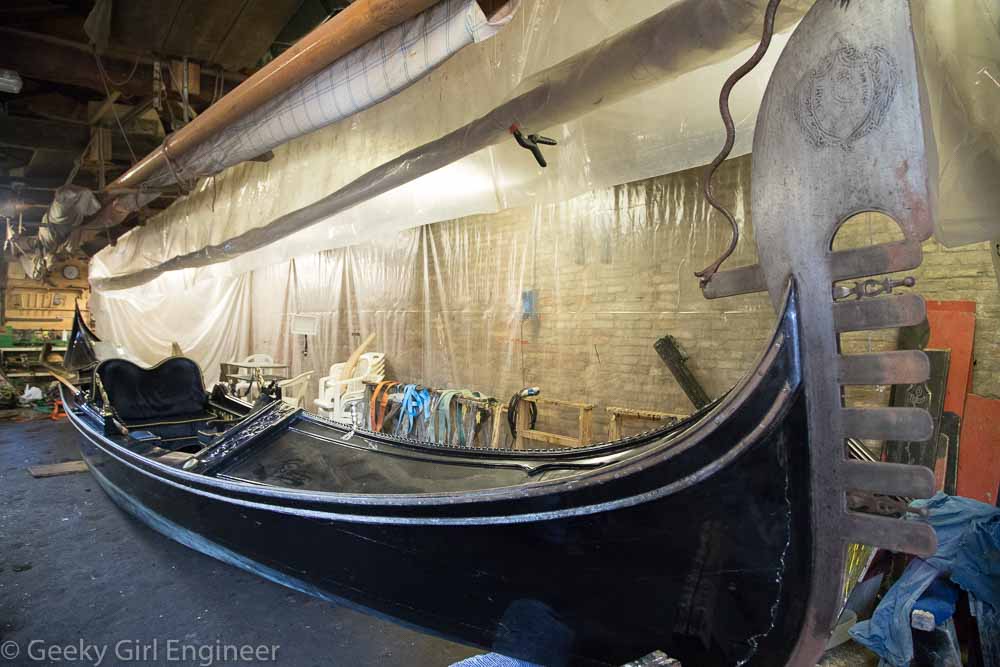
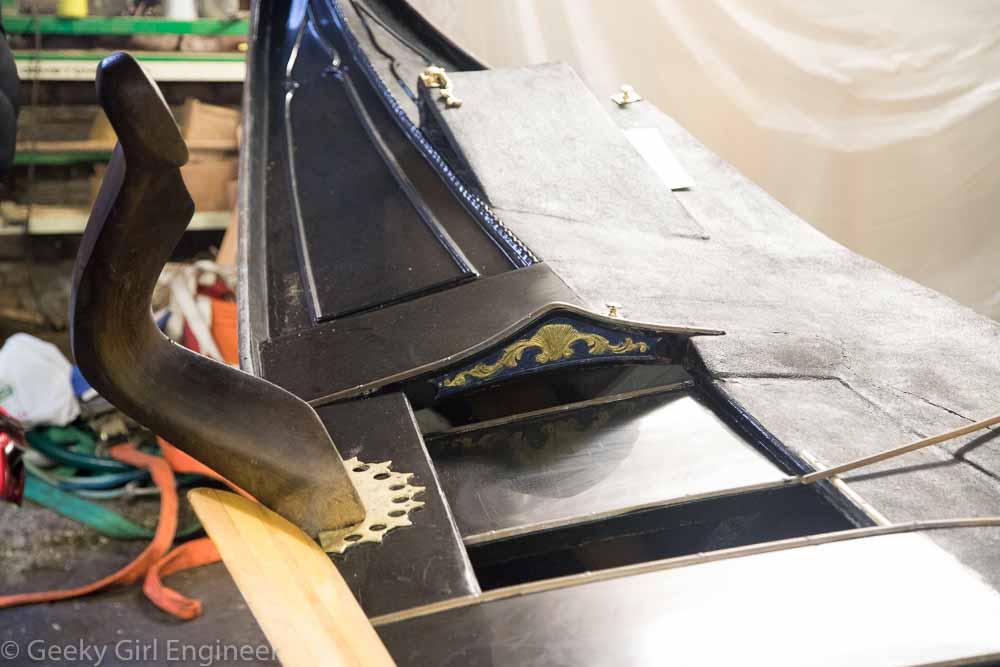
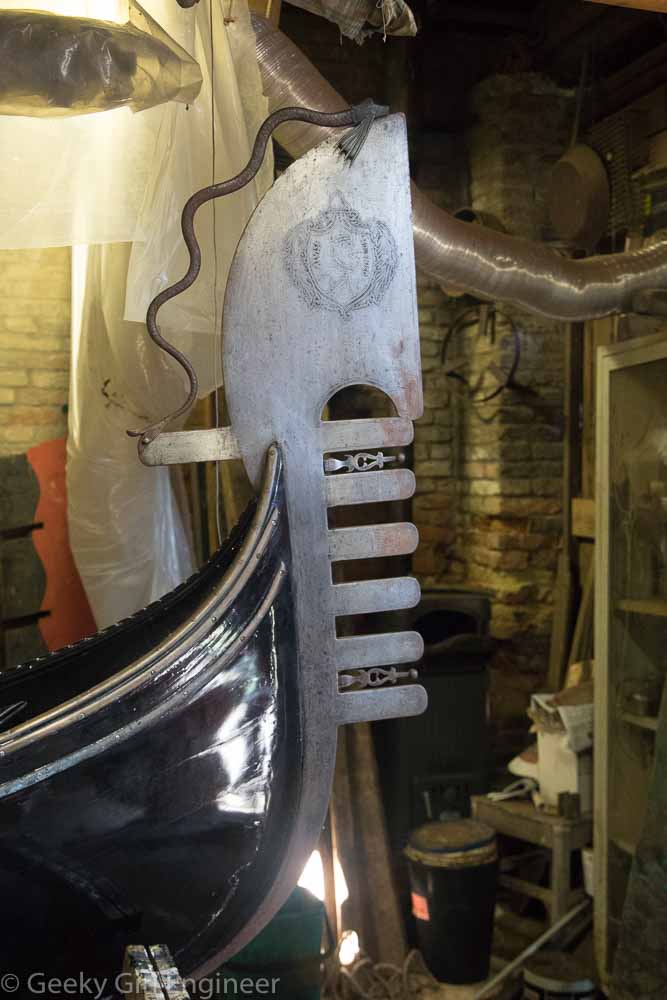
After visiting the squero, we then visited an artisan who makes some of the special wooden pieces for the gondola including the all important forcula. They are made by hand. He now sells more of them around the world as art pieces than as their historical use in gondolas. He has another shop on the mainland, where once he acquires wood, he cuts it into smaller pieces and allows it to dry naturally. Each forcula is built specific to the customer, based on customer height and such. The pieces are finished with oil. The bottom part of the forcula is finished last once the gondola is built, so that is fits securely into the gondola.
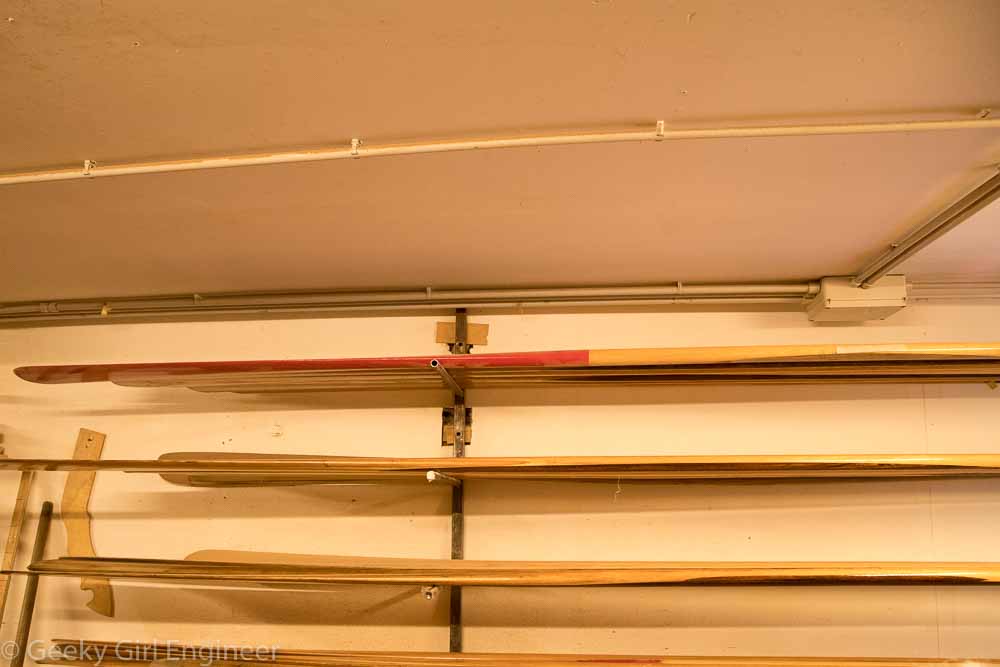


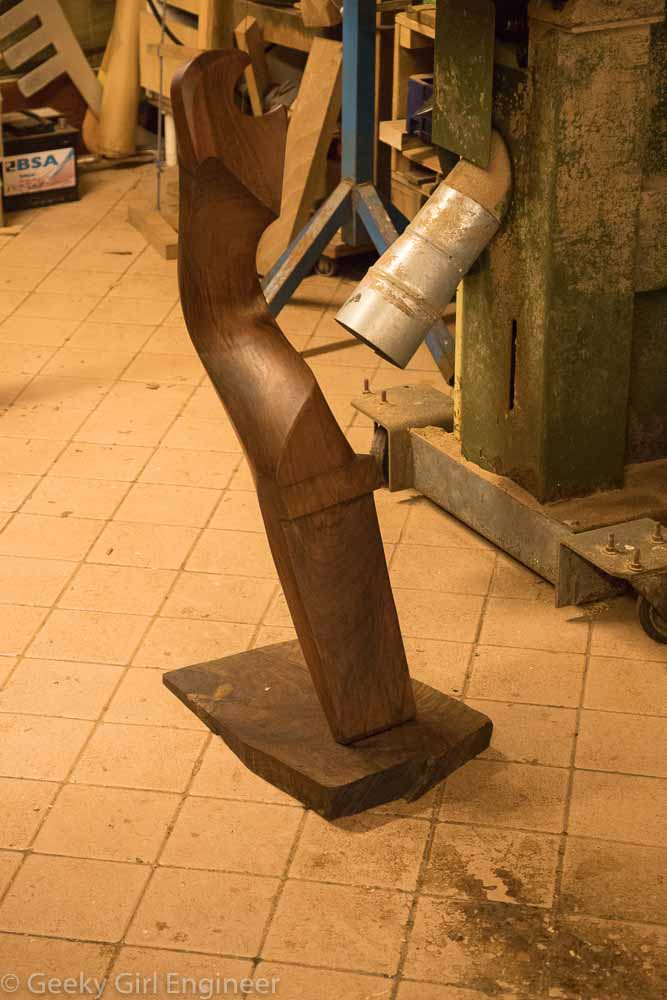
We then went for a gondola ride, and I started paying attention to how it was operated. The gondola ride was quite nice and relaxing.
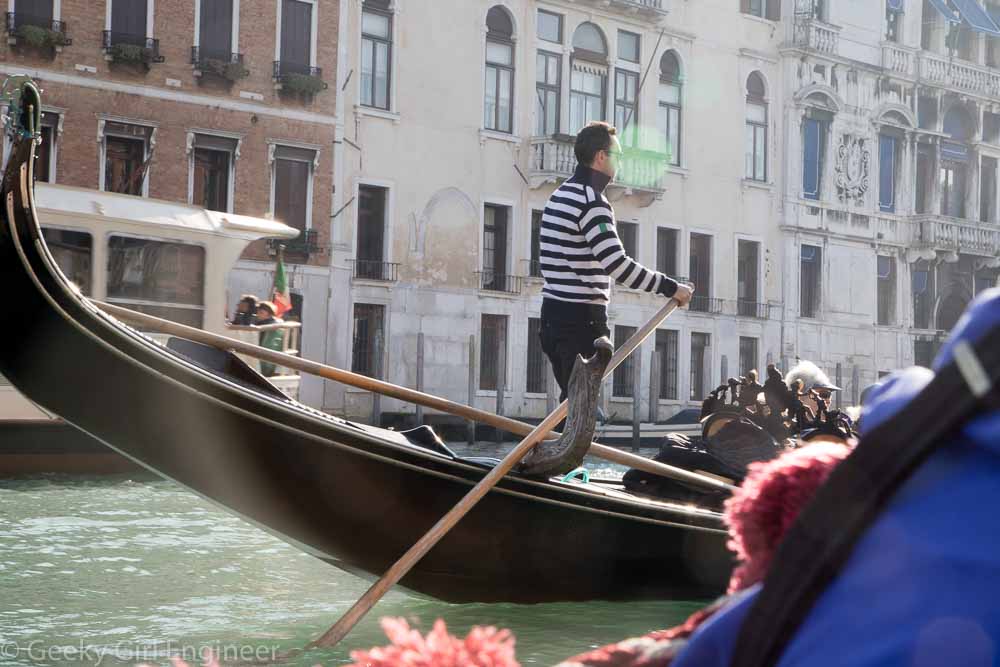

A few final notes. There are 433 licenses for gondoliers, and only one is held by a woman. There is a waiting list to get one. We were told there are about 500 gondolas working now, which numerically doesn’t add up. We were told there are extra for loaners during maintenance. However, since we were told they are made specific to the gondolier, I am not sure how loaners work.
